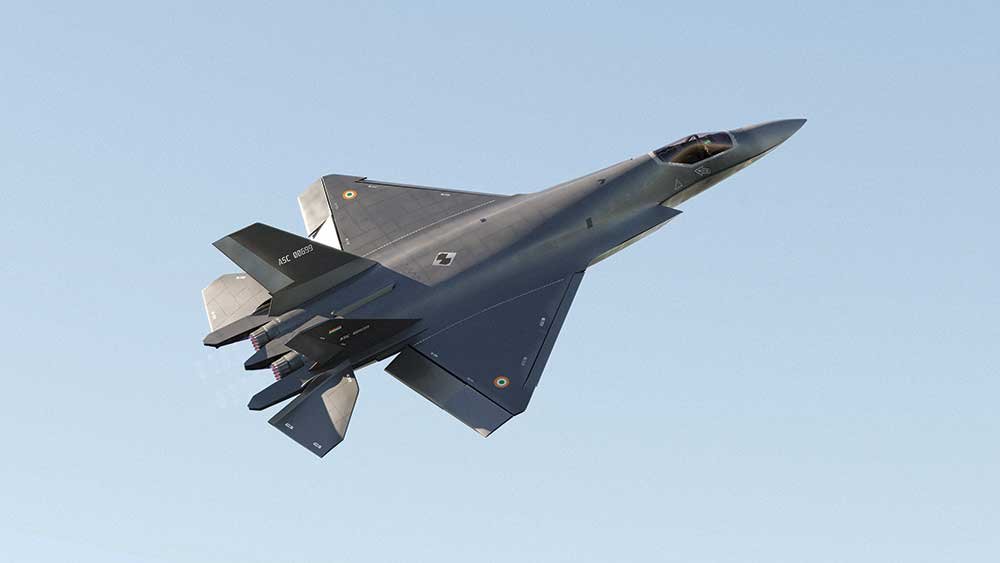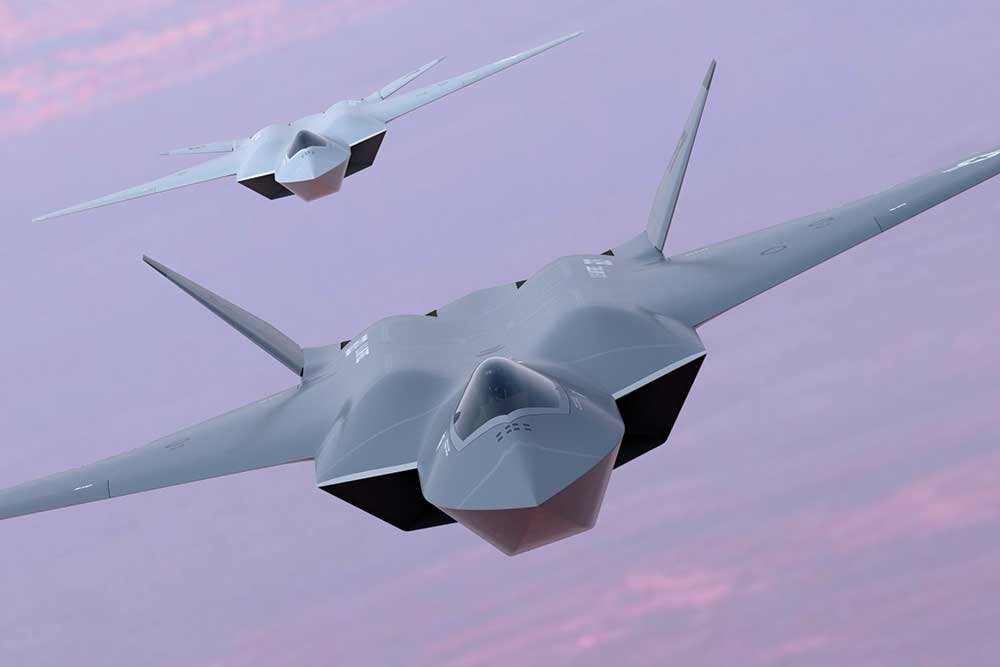The global defence landscape is undergoing a transformative shift with the advent of sixth-generation fighter jets. China’s recent advancements, including the testing of two prototypes of these state-of-the-art aircraft, have raised alarms in defence circles worldwide. These developments come as China already boasts a formidable aerial fleet, including the “J-20” stealth fighters. Meanwhile, India, a regional power and strategic counterweight to China, continues to rely on the fourth-and-a-half-generation “Rafale” jets while pushing forward its indigenous fifth-generation “Advanced Medium Combat Aircraft” (AMCA) project. The growing technological disparity in aerial capabilities necessitates a thorough examination of how India can effectively balance the power equation.
The Sixth-Generation Leap
Sixth-generation fighter jets represent a quantum leap in air combat capabilities. They are designed to incorporate advanced stealth features, artificial intelligence (AI) for decision-making, manned-unmanned teaming (MUM-T), directed energy weapons, and hypersonic missiles. According to reports, China’s prototypes emphasize integration with swarm drone technology and hypersonic speed, enabling them to dominate the modern battlefield. The unveiling of these jets not only underscores Beijing’s technological prowess but also highlights its intent to establish air dominance, particularly in the Indo-Pacific region. India’s current frontline aircraft, the Rafale, offers cutting-edge avionics, long-range missile capabilities, and superior radar systems, positioning it as a formidable platform in South Asia. However, when juxtaposed against China’s sixth-generation advancements, the Rafale’s limitations become evident. The question arises: How can India bridge this gap and ensure its aerial supremacy remains intact?
China’s leap in fighter jet technology presents a formidable challenge for India. With its current fleet facing obsolescence against Beijing’s cutting-edge capabilities, India must urgently modernise its air force
India’s Response: The AMCA
India’s ambitious AMCA project is its answer to next-generation aerial warfare. The AMCA, a fifth-generation fighter jet, is envisioned to possess advanced stealth, super cruise capability, and AI-powered systems. It aims to serve as a platform capable of holding its own against global competitors. However, the timeline for AMCA’s operational deployment—its first flight is expected in 2028, with production slated for the mid-2030s—poses significant challenges. The long gestation period leaves a critical gap during which China’s sixth-generation fighters could reshape regional dynamics.
Short-Term Strategies to Bridge the Gap
While the AMCA holds promise for the future, India must adopt a multi-pronged strategy to address immediate and mid-term challenges. India’s current fleet of Rafales and Sukhoi Su-30 MKIs can be upgraded with advanced avionics, radars, and weaponry to bolster their effectiveness. Incorporating new technologies, such as AESA (Active Electronically Scanned Array) radars and long-range precision missiles, can significantly enhance the combat readiness of these platforms. The recent integration of the “Hammer” missile and “Meteor” beyond-visual-range missiles on the Rafale is a step in this direction. Given the time constraints associated with the AMCA, India should consider acquiring additional Rafales or exploring partnerships to procure other advanced fighter jets. The F-35, a fifth-generation fighter jet from the United States, could be an option, provided geopolitical and logistical hurdles are addressed. Such acquisitions would provide India with a technological edge in the interim.
However, China’s advancements in swarm drone technology highlight the growing importance of unmanned aerial systems. India must accelerate its indigenous UAV programs, such as the “Ghatak” combat drone, while exploring partnerships for advanced drone technologies. A well-integrated UAS fleet can serve as a force multiplier, providing reconnaissance, electronic warfare, and strike capabilities. Investments in force multipliers like Airborne Early Warning and Control (AEW&C) systems, aerial refuelling tankers, and electronic warfare platforms are critical. These assets enhance the operational range and survivability of fighter jets, ensuring that India’s air force remains effective in high-threat environments. Modern aerial warfare is as much about platforms as it is about infrastructure. India must continue to develop and modernize its airbases, particularly in forward locations along the northern and eastern borders. Hardened shelters, advanced maintenance facilities, and integrated air defence systems are essential to sustaining long-term operational readiness.

Long-Term Vision: AMCA and Beyond
India’s success in balancing power with China hinges on the timely execution of the AMCA program. To ensure this, the government must:
- Streamline Procurement Processes: Delays in defence procurement have historically plagued India’s defence projects. Streamlining decision-making and reducing bureaucratic red tape are critical to meeting project timelines.
- Focus on Indigenous R&D: Collaborating with global defence companies for critical technologies, such as engines and stealth materials, can fast-track the AMCA’s development. However, the ultimate goal should be self-reliance, aligning with the “Make in India” initiative.
- Leverage International Partnerships: India should actively participate in global defence collaborations. Programs like the “Global Combat Air Programme” (GCAP), led by the UK, Japan, and Italy, offer opportunities for technology sharing and co-development.
- Develop a Sixth-Generation Roadmap: While the AMCA addresses fifth-generation needs, India must simultaneously lay the groundwork for sixth-generation fighter development. Establishing a clear roadmap, supported by sustained investment in advanced research areas like AI, hypersonics, and quantum technologies, is imperative.
The timeline for AMCA’s operational deployment – its first flight is expected in 2028, with production slated for the mid-2030s poses significant challenges. The long gestation period leaves a critical gap during which China’s sixth-generation fighters could reshape regional dynamics
Challenges on the Horizon
India’s path to balancing power is fraught with challenges. Financial constraints, delays in project execution, and dependency on foreign suppliers for critical components remain significant hurdles. Additionally, geopolitical pressures, such as balancing relationships with the US and Russia while addressing China’s aggressive posture, add layers of complexity to defence planning. Furthermore, China’s economic and industrial advantages allow it to sustain large-scale defence projects with relative ease. India, on the other hand, must prioritize its limited resources across a range of competing demands, including maritime security and counter-terrorism operations.
Takeaways
The rapid evolution of aerial warfare underscores the need for India to adopt a holistic and proactive approach to modernising its air force. While the Rafale provides a robust interim capability, and the AMCA holds promise for the future, bridging the technological gap with China’s sixth-generation fighters requires sustained investment, strategic foresight, and international collaboration. India’s ability to balance power in the region will not only determine its defence readiness but also shape its role as a stabilising force in the Indo-Pacific. By leveraging a combination of immediate enhancements, mid-term acquisitions, and long-term developmental programs, India can ensure that it remains prepared to counter any challenge in the skies.
–The writer is a Special Advisor for South Asia at the Parley Policy Initiative, Republic of Korea. He regularly provides commentary on India-China border issues, water security, and transboundary river challenges in South Asia. You can follow his updates on X at @The_China_Chap. The views expressed are of the writer and do not necessarily reflect the views of Raksha Anirveda


















